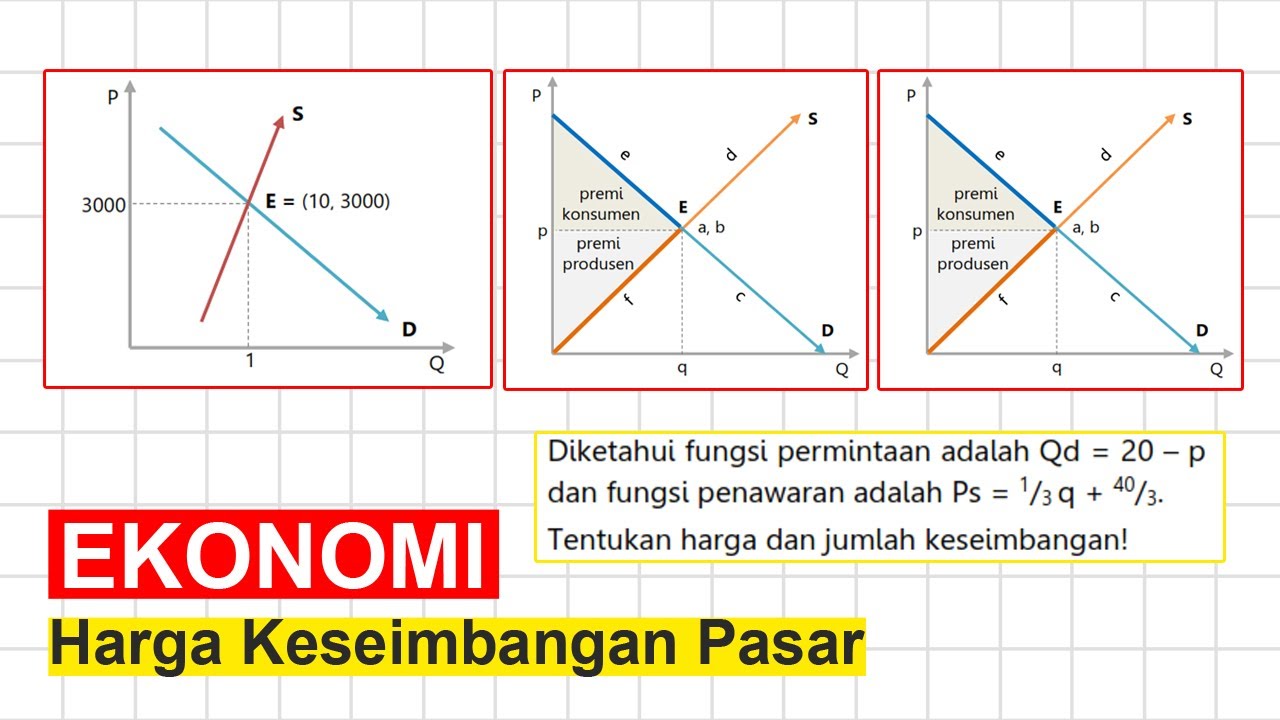Demand Curve as Marginal Benefit Curve
Summary
TLDRIn this video, the concept of demand curves is re-explored by focusing on quantity driving price instead of price driving quantity. Using a car market example, the speaker explains how producers determine price based on the quantity of cars produced. For each additional car, the willingness of consumers to pay decreases, reflecting the marginal benefit. The speaker contrasts this approach with earlier discussions and highlights how some consumers may receive greater value than what they pay, setting the stage for further discussion on consumer surplus in future videos.
Takeaways
- 💡 The video discusses demand curves, traditionally focused on price determining the quantity sold, but introduces an alternative view where quantity drives price.
- 🚗 Using the example of car sales, the speaker demonstrates how price changes based on how many units are sold and the corresponding willingness of consumers to pay.
- 🔄 The concept of marginal benefit is introduced, where each additional unit sold has a lower marginal benefit or price point to the buyer.
- 👥 If only one car is sold, the highest price that a buyer is willing to pay ($60,000) is achievable. As more cars are sold, prices must decrease to attract additional buyers.
- 💲 For two units to sell, the price must drop to $50,000, and the process continues, with the price dropping for every additional unit sold.
- 📉 Marginal benefit measures the value the next consumer places on the product, and this influences pricing strategies when trying to increase sales volume.
- 🔍 The video contrasts two perspectives on demand: pricing based on quantity sold and adjusting price to increase the number of units sold.
- 🛠 The concept links to opportunity cost—buyers weigh what they give up when purchasing the car instead of something else.
- 💬 The video hints at future discussions on consumer surplus, where early consumers could have been willing to pay much more than the price set to sell higher volumes.
- 🧠 This shift in thinking about demand curves allows producers to better understand pricing strategies, particularly in maximizing the number of units sold while considering marginal benefits.
Q & A
What is the main difference in approach discussed in the video about demand curves?
-The main difference in approach is that the video shifts from looking at price driving quantity to considering quantity driving price. Instead of asking how much will be sold at a given price, it explores how high the price can be set for a specific quantity.
How does the speaker use an example of car sales to explain the concept?
-The speaker uses the example of pricing cars at different levels ($60,000, $50,000, etc.) to explain how the price affects the quantity sold. For instance, if only one car is produced, it could be sold at $60,000, but to sell two cars, the price would need to drop to $50,000.
What is meant by 'marginal benefit' in the context of the video?
-Marginal benefit refers to the additional value or willingness to pay by the next consumer for the next unit of the product. For example, the marginal benefit of the second car might be $50,000, while the marginal benefit of the third car is $40,000.
Why is the willingness to pay different for each buyer in the example?
-The willingness to pay varies because each buyer values the car differently based on their personal needs, preferences, and how much they are willing to forego in terms of other purchases.
What happens to the price if a producer wants to sell more units of the car?
-If a producer wants to sell more units of the car, the price must be reduced to match the marginal benefit of the next buyer. For example, to sell a third car, the price may need to drop to $40,000 to attract that third buyer.
What does the speaker mean by 'convincing the next consumer to say it is worth it'?
-The speaker means that to sell an additional unit, the price must align with what the next consumer considers a fair trade-off for the product. This consumer will buy the car only if the price meets or is below their perceived value of the car.
How does the concept of 'foregone opportunity' relate to price in this discussion?
-Foregone opportunity refers to what consumers give up by choosing to spend their money on the car rather than on other potential purchases. Price represents the cost of this trade-off, making it a measure of opportunity cost.
What is the significance of the Production Possibilities Frontier (PPF) mentioned in the video?
-The Production Possibilities Frontier (PPF) is significant because it helps illustrate trade-offs and opportunity costs, which are similar to the marginal benefit concept used in this video. The PPF shows how resources can be allocated between different goods, similar to how consumers allocate their spending between goods based on marginal benefit.
What is the implication of pricing a car at $30,000 to sell four units?
-Pricing a car at $30,000 to sell four units implies that while the fourth buyer values the car at $30,000, earlier buyers (e.g., the first and second) would have been willing to pay much more, resulting in those buyers getting a better deal than their marginal benefit suggests.
What concept will the speaker discuss in the next video?
-In the next video, the speaker will discuss the concept of consumer surplus, where some consumers get more value (or surplus) from their purchase than what they paid for, especially when the price is set lower than what some consumers were willing to pay.
Outlines

此内容仅限付费用户访问。 请升级后访问。
立即升级Mindmap

此内容仅限付费用户访问。 请升级后访问。
立即升级Keywords

此内容仅限付费用户访问。 请升级后访问。
立即升级Highlights

此内容仅限付费用户访问。 请升级后访问。
立即升级Transcripts

此内容仅限付费用户访问。 请升级后访问。
立即升级5.0 / 5 (0 votes)






